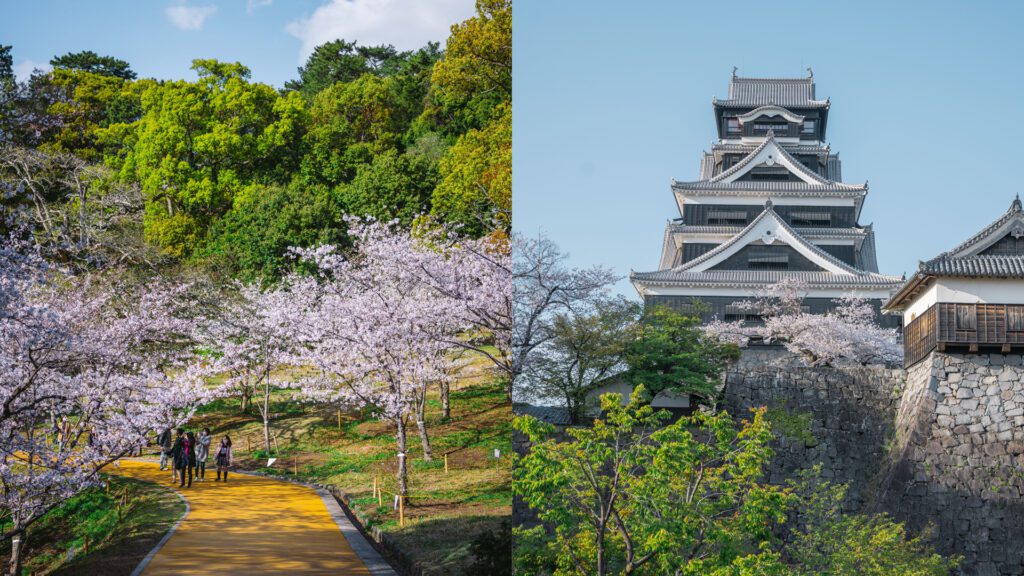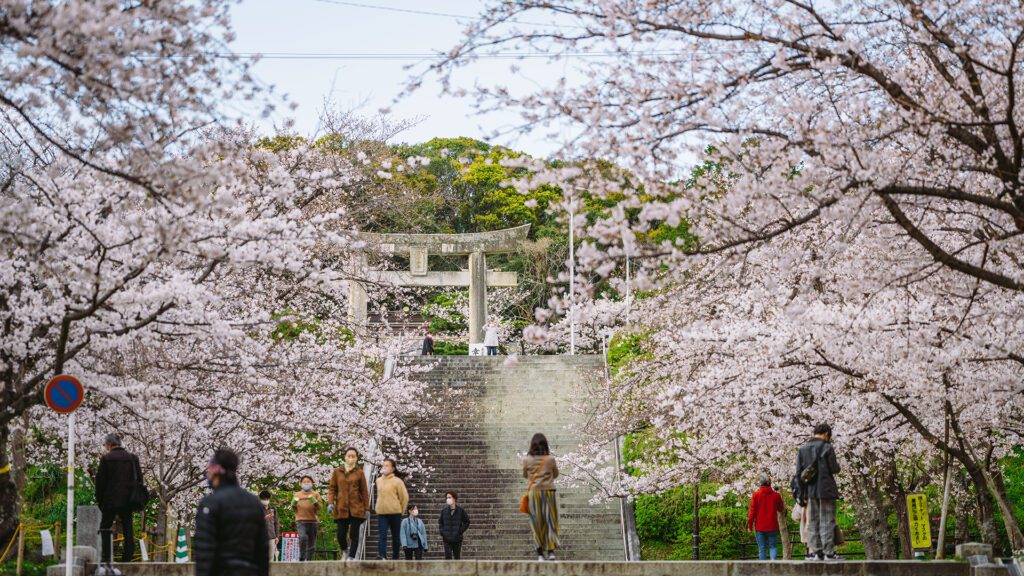THERE’S A special time of year in Japan when locals and visitors alike come together to enjoy the colourful fruits of nature.
The blooming of the cherry blossoms is a national delight, symbolising renewal and hope for the future.
While popular across the country, the first place to see them in all their splendour is in Kyushu, the most southerly of Japan’s four main islands.
Here they are unlike what can be seen elsewhere in Japan due to their unique locations from castle grounds to rail carriages and volcanic coast lines.
Here are six top locations and experiences in Kyushu, where visitors can take in Japanese history and culture at the same time.
1 Nishi Park
This is the only place in Fukuoka Prefecture that has been selected as one of the 100 Best Sakura Places in Japan.
Nishi Park boasts views over Fukuoka City, Hakata Bay and Shika Island. During cherry blossom season it has 1,300 trees in several different varieties reaching full bloom.
A wide variety of trees such as the Yoshino, Oshima, Yamazakura and Weeping cherry have been planted and it’s a local favourite for picnics and parties.
2 Kumamoto Castle
This is one of the city’s much-loved symbols and is also regarded as one of Japan’s three most admired castles.
It’s even more endearing in spring with 800 surrounding cherry blossom trees imposing themselves in front of the castle’s ancient stone walls. When the trees are in full bloom, they completely cover the castle grounds creating a festive atmosphere.
The castle is conveniently located in the centre of Kumamoto City and only a 10-minute taxi ride from Kumamoto Station.

3 Sengan-en Garden, Kagoshima
Kagoshima is well known in Japan for its famous active volcano called Sakurajima. Its name includes the word sakura, which means “cherry blossom” in Japanese.
It is believed the name evolved due to cherry blossom petals found floating on the water in the sea surrounding Sakurajima when the volcano erupted many years ago.
The garden covers almost five hectares and the site boasts views over Kinko Bay and Sakurajima. Built in 1658, Sengan-en was originally a home for the Shimadzu family who ruled this part of Kyushu. The property was built with a mix of traditional Japanese style and European influence.
4 Omura Park, Nagasaki
This is one of Nagasaki’s favourite cherry blossom sites and was built over the outer moat of the former Kushima Castle. The entire park transforms in spring when the 2,000 cherry trees of 21 different varieties bloom.
The Omura Sakura is said to be the most graceful cherry blossom in Japan with more than 60 petals per flower (the usual Japanese cherry blossom normally has five petals). It has the appearance of a rose, making it a rare cherry blossom in Japan.

5 Mifuneyama Rakuen
Mifuneyama Rakuen is located in Saga and was created in 1845 for the ruler of the Takeo region, Shiugeyoshi Nabeshima, upon his request for a living work of art.
Using the mountain as part of the scenery, the property spans 50 hectares and is designed to offer picturesque scenes in all seasons.
It is particularly popular in the spring, when it attracts visitors to see more than 2,000 pink cherry blossoms followed by 200,000 azaleas in late spring, moving into shady greens in summer.
In autumn the park is lit up with reds, oranges and yellow leaves and in winter, the red camellias are striking against a snowy backdrop.
The park offers a tea house and events are held year-round including illuminations, installations and festivals. The cherry blossoms are lit up in spring at night, with the azaleas, wisterias and spring maples swirling around them.
6 Steam Locomotive Viewing
For those looking for a different way to view the cherry blossoms, why not board a train?
In Kumamoto, you can view cherry blossoms while riding an antique-looking steam locomotive. Visitors can enjoy the cherry blossoms blooming on the riverside during the ride from Kumamoto Station to Tosu Station for approximately two-and-a-half hours.
Ekiben, train bento boxes and shochu with ice (a Japanese alcoholic beverage), are also sold inside the railcar.
Reservations are necessary as the train seats are all designated and this can be done at any JR ticket office.
The SL Hitoyoshi is now in its final year of operation before it retires in March 2024, so this is a nostalgic experience not to be missed as it’s the oldest operating steam locomotive train in Japan.



